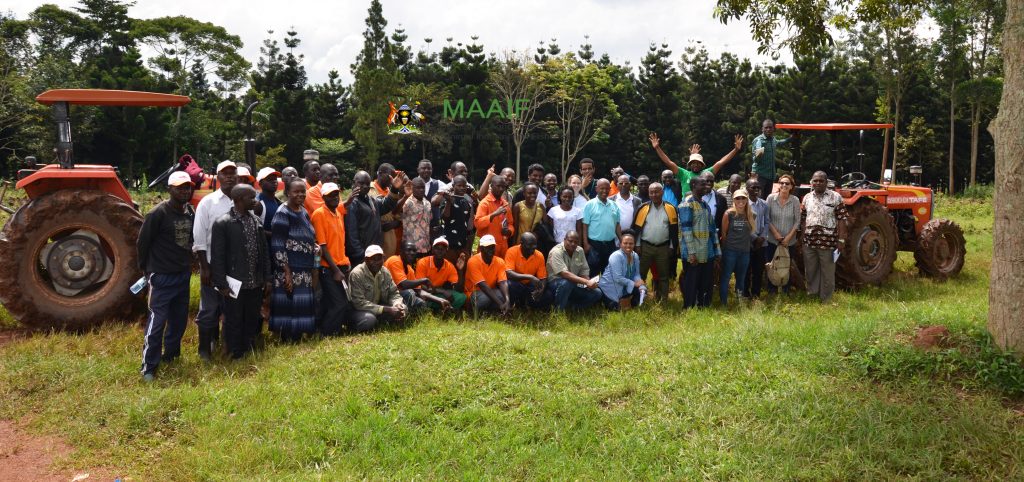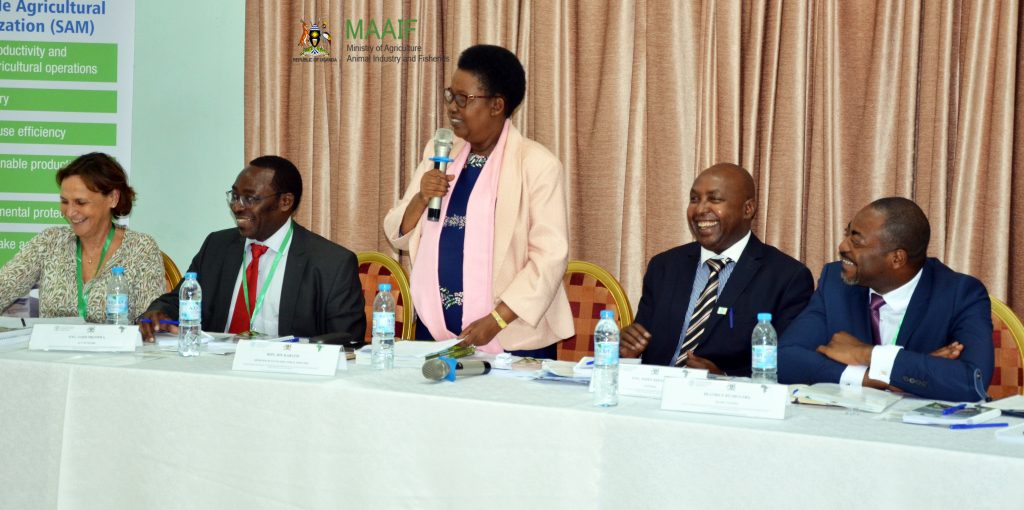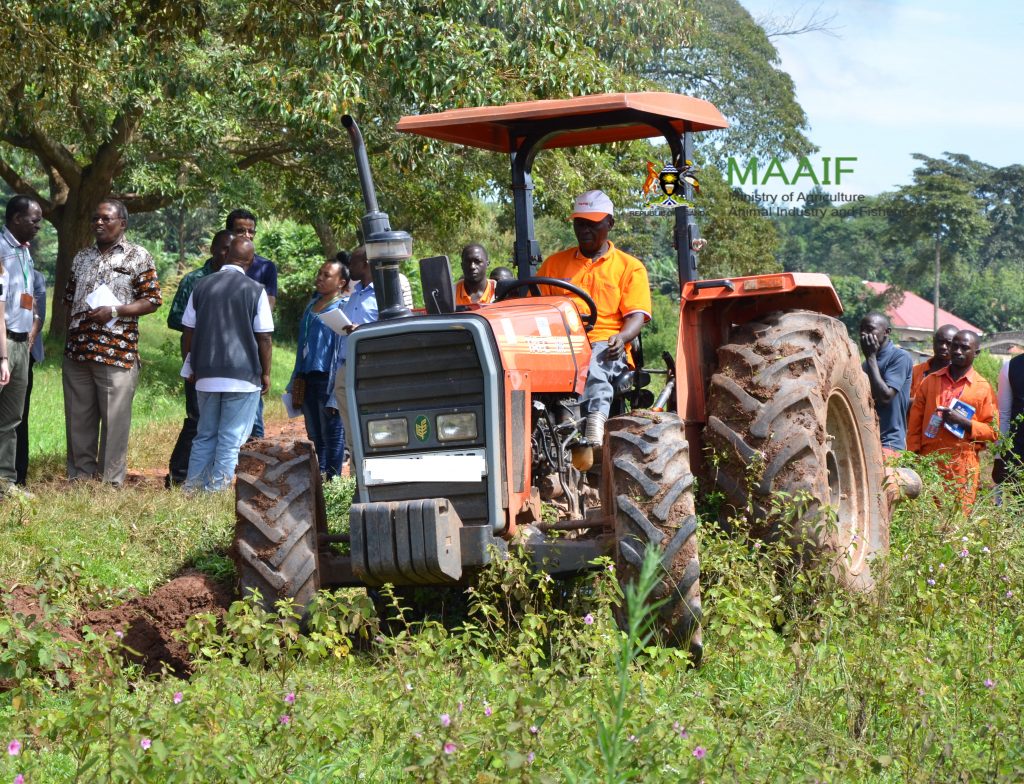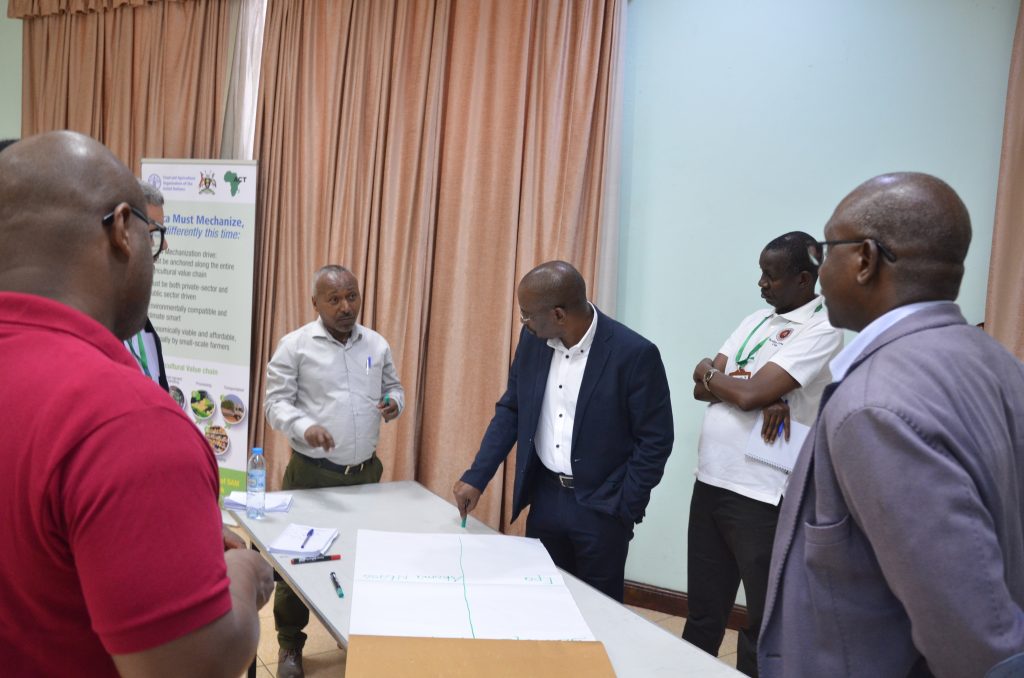
Mechanisation Experts from Sub-Saharan Africa Convene to Fast-track Alignment of National Strategies with the Continental Framework
Kampala, 10th December 2019. Country representatives and Heads of Agricultural Mechanisation Departments in Kenya, Tanzania, Ethiopia, Zambia, Ghana and Uganda are convening in Kampala for a regional Workshop opened on Tuesday by Hon. Joy Kabatsi the State Minister for Animal Industry.
The Regional Workshop was convened by the Food and Agriculture Organization of the United Nations (FAO) in collaboration with the African Conservation Tillage Network (ACT) and the Ministry of Agriculture Animal Industry and Fisheries to allow the countries to share experiences in the field of Sustainable Agricultural Mechanization hire services provision.

The regional workshop is part of the actions undertaken by the FAO and ACT following their recently signed Memorandum of Understanding to work together in the implementation of the Sustainable Agricultural Mechanization (SAMA) Framework.
This is part of the operationalization phase of the SAMA framework is intended to contribute to agricultural transformation through mechanisation supported by the African Union Commission (AUC) and the view agricultural mechanization in Africa as an urgent matter and an indispensable pillar for attaining the Zero Hunger vision by 2025, as stated in the Malabo Declaration of 2014, Goal 2 of the Sustainable Development Goals, and the Prosperous Africa We Want, as indicated in Agenda 2063.
Steps taken by Uganda
As a country, Uganda has made progress in promoting mechanized agriculture through among other approaches, the recent procurement of 284 tractors through the National Agricultural Advisory Services and Vegetable Oil Development Project that was accompanied with the training of over 500 Tractor Operators already attached to the farmer groups for batch 1.

Tractor Access Guidelines for Uganda are available here on the official Ministry website (https://www.agriculture.go.ug/1832-2/)
Most developing countries and, indeed, African countries have an economy strongly dominated by the agricultural sector. Agriculture generates up to 50 percent of gross domestic product (GDP), contributing more than 80 percent of trade in value and more than 50 percent of raw materials to
industries. It provides employment for the majority of Africa’s people.
Despite this domination the sector is still grossly underdeveloped in most African countries. Furthermore, 30 to 40 percent of agricultural produce is lost owing to poor post-harvest handling, storage and processing methods.
Therefore, there is high potential for lateral expansion of the agriculture sector at all levels.

The low level of mechnaization inputs in agriculture has been cited as one of the main constraints hindering the modernization of agriculture and food production systems in Africa.
The African Union and FAO launched and published in 2018, the Sustainable Agricultural Mechanization: a framework for Africa (SAMA) premised on the guiding principle by Dr. Nkosazana Dlamini Zuma, Chairperson, from 2012 to 2017, African Union Commission that ‘the current mechanization wave is to send the hand hoe to the museum and liberate the African farmer from the backbreaking drudgery of tilling the land by hand.”
The framework is grounded on the need to make Africa’s agriculture to the driving seat of growth and development by focusing on private-sector-led, environmentally friendly, climate-smart, but also economically viable and
affordable agricultural mechanization, particularly for small producers, with particular attention to the role of women and youth.
According to this framework, Sustainable agricultural mechanization (SAM) is regarded as important input for the development of the smallholder farm sector in sub-Saharan Africa (SSA).
The benefits of SAM range from drudgery reduction to improved timeliness of agricultural operations, increased input use efficiency, facilitating sustainable production intensification, ensuring environmental protection, and contributing to make agriculture more ‘climate-smart.’
SAM is also important at other levels of the food supply system, for example in post-harvest operations, processing, marketing and transportation.
Notes for editors
About the Ministry of Agriculture, Animal Industry and Fisheries (MAAIF)
The Ministry of Agriculture, Animal Industry and Fisheries is a Ministry in the Government of Uganda charged with creating an enabling environment in the Agricultural Sector.
The Ministry formulates, reviews and implement national policies, plans, strategies, regulations and standards and enforce laws, regulations and standards along the value chain of crops, livestock and fisheries.
Vision: A competitive, profitable and sustainable agricultural sector.
Mission: To transform subsistence farming to commercial agriculture.
Strategic Objectives
- To initiate the formulation and review of the policy and legal framework for the sector
- To establish and implement systems for service provision in the sector
- To strengthen and implement strategies, regulatory framework, standards, institutional structures and infrastructure for quality assurance and increased quantities of agricultural products to access and sustain local, regional and export markets
- To design and implement sustainable capacity building programmes for stakeholders in the agricultural sector through training, re-tooling, infrastructure, provision of logistics and ICT
- To develop strategies for sustainable food security
- To develop appropriate agricultural technologies for improved agricultural production, productivity and value addition through research
- To develop effective collaborative mechanisms with affiliated institutions and
- To take lead and establish a system and institutional framework for agricultural data collection, analyses, storage and dissemination to stakeholders including Uganda Bureau of Statistics.
The Ministry of Agriculture, Animal Industry and Fisheries (MAAIF) is made up of four Directorates including the Directorate of Crop Resources, Directorate of Animal Resources, Directorate of Agricultural Extension Services and the Directorate of Fisheries Resources each with Departments, Divisions and Partnership Projects.
The Departments of the Ministry which do not fall directly in the above include the Department of Agricultural Planning and Development, the Human Resource Department, the Department of Finance and Administration and the Department of Agricultural Infrastructure, Mechanisation and Water for Agricultural Production.
The Ministry is also made up of seven Agencies including the National Agricultural Research Organisation (NARO), the National Agricultural Advisory Services (NAADS), Cotton Development Organisation (CDO), Dairy Development Authority (DDA), Uganda Coffee Development Authority (UCDA) and Coordinating Office for the Control of Trypanosomiasis in Uganda (COCTU) and the National Animal Genetic Resources Centre and Databank (NAGRC&DB).
For media-related inquiries and accreditation contact Solomon Kalema Musisi, Senior Communications Officer-Ministry of Agriculture Animal Industry and Fisheries using the email below:
